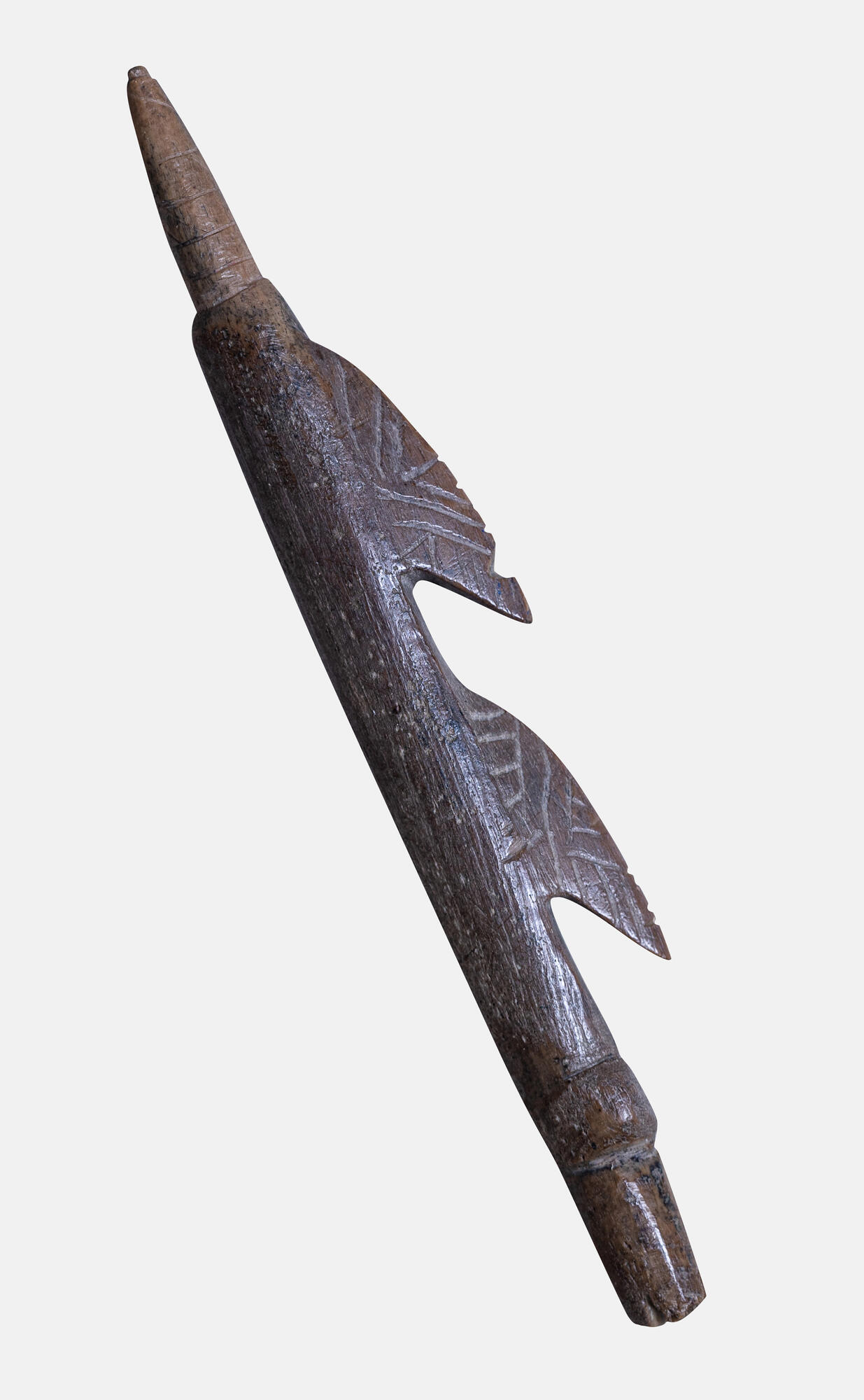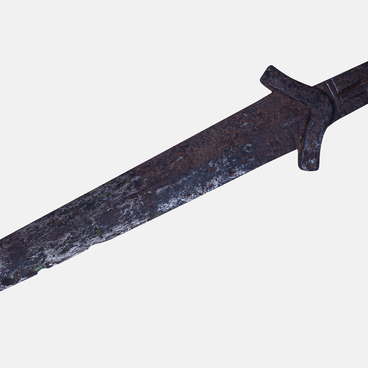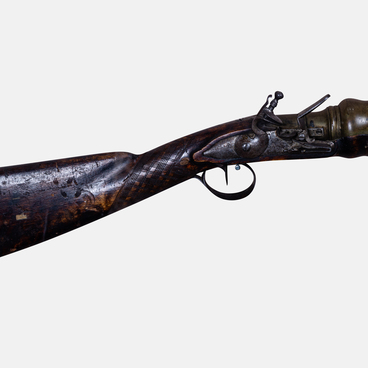The Ulyanovsk Regional Museum of Local Lore named after Ivan Goncharov houses a harpoon — a throwing hunting weapon made between the 9th and 5th millennia BC.
A harpoon head was made of bone or horn and tied to a shaft. When it hit the target, the head separated from the shaft and got stuck, and then the animal or fish was pulled by the hunter. In Eastern Europe, harpoons were around starting from the late Paleolithic and the Mesolithic eras.
A two-barbed patterned harpoon head made of bone was found in 1934 on the banks of the Sviyaga River by an Ulyanovsk resident and a brick factory mechanic Kiselyov. The harpoon head is 12.3 centimeters long. The harpoon head has a needle-shaped tip, which is separated from the body by a notch. The piece is decorated with engraved patterns. The barbs of the harpoon head are covered with notches — oblique crosses, broken lines, simple lines and lines with strokes. The tip is encircled by loop and spiral lines. The presented harpoon head was first mentioned by the famous archaeologist Grigory Burov in his book “Stone Age of the Ulyanovsk Volga Region”.
Most likely, the Ulyanovsk find dates to the Mesolithic Age. The beginning of the Mesolithic Age (12–8 thousand years ago) coincided with the melting of the glacier ice masses. The cold climate gave way to a warmer and more humid one. In the Mesolithic Age, bows, arrows, fishing nets, boats and skis were invented. The most important indicator of the onset of the Mesolithic Age on the territory of Eastern Europe and especially the Middle Volga region and the Urals was the emergence and spread of the technique of making microblades — flint chips of small size and regular shape.
The Khovrinskoye Mesolithic settlement, where the remains of dwellings from the Mesolithic period have been found, is a monument unique for the Ulyanovsk Volga region. The Khovrinskoe Mesolithic settlement, studied by the archaeologist Alexander Viktorovich Viskalin, was a temporary encampment, most likely used during the cold season.
For the longest time, harpoons were used in fishing and marine animal husbandry by the indigenous peoples of the North: the Eskimos, the coastal Chukchi, the Koryaks and others.


